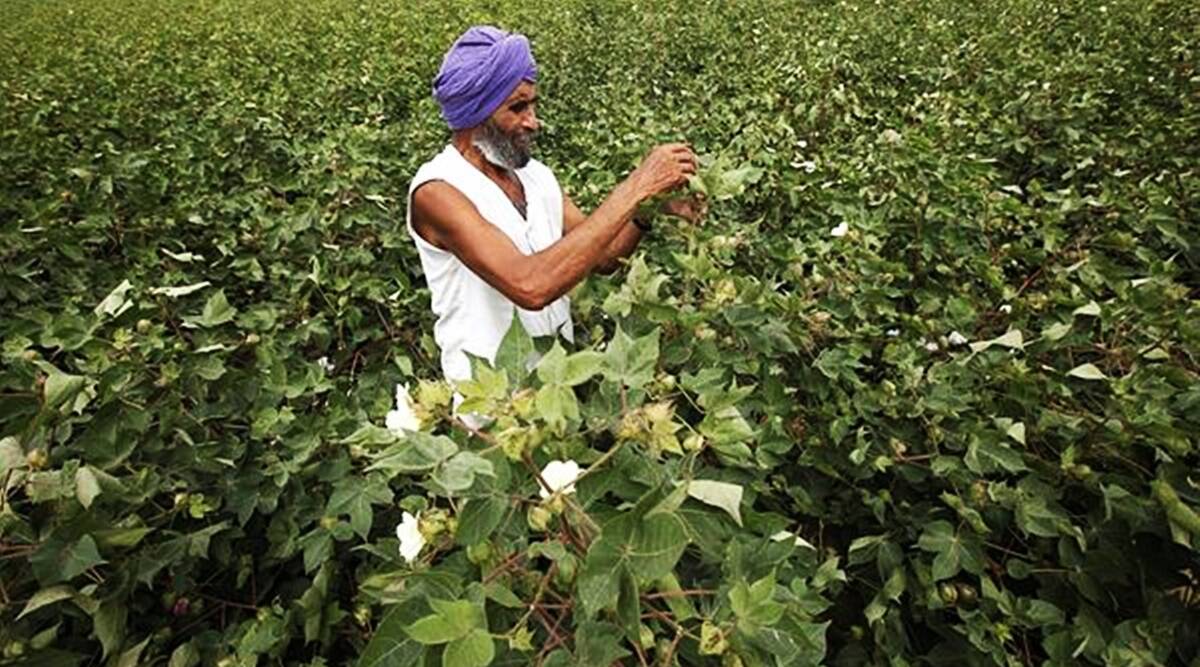 Around 650 farmers and farm labourers are being trained across the seven clusters. (File)
Around 650 farmers and farm labourers are being trained across the seven clusters. (File)These farmers had invested extensively in cotton crop last year and got their fingers burned when pink bollworm (PBW) attack wreaked havoc on their fields. Although disillusioned with last year’s experience, they haven’t completely abandoned cotton crop this year but have certainly reduced the quantum of its cultivation. They are pinning their hopes on ‘PBKnot technology’, which has a potential to control the pests by disrupting the mating of PBW adults.
Young farmer Randeep Singh, from Behman Koer Singh, a cotton village under Talwandi Sabo block of Bathinda district, had suffered over 90% loss on his cotton crop due to the deadly PBW attack last year. He had sown cotton on 35 acres, including 10 acres of his own and 25 acres he took on lease, but he could not harvest even 10% of the expected normal yield. He was not the only one who bore the brunt of the PBW attack and the resultant yield loss but the farmers of his entire village were at the receiving end of it. This time he reduced his cotton cultivation to 18 acres. He has decided to sow guar on 10 acres and paddy for the first time on 5 acres.
His village has 2,800 acres of land where cotton used to be sown on 2,400 acres. This year, the area under cotton cultivation has been reduced to 1,000 acres.
Despite having a fear of PBW attack this year too, he is hoping that his cotton crop may remain safe this time because his fields have come under one of the three clusters selected for ‘field experiment-cum-demonstration’ of the mating disruption ‘PBKnot technology’ in the state to manage PBW.
‘Knot of PBW Protection’, this technique is part of project ‘Bandhan’ of the South Asia Biotechnology Centre (SABC), Jodhpur, in collaboration with Ambuja Cement Foundation (ACF), supported by PI Foundation under the technical supervision of ICAR-CICR. The project has been launched in northern states where 469 acres in seven clusters each of over 65 acres is spread in seven districts of three states, including Bathinda, Mansa and Fazilka in Punjab; Sirsa and Fatehabad in Haryana; and Ganganagar and Hanumangarh in Rajasthan. The PBW had wreaked havoc last year on cotton crop in Bhatinda and Mansa in Punjab; Sirsa, Fatehabad and Hisar in Haryana.
Subscriber Only Stories
“Mating disruption is an innovative pheromone-based technique that interferes with the reproductive cycle of PBW in such a manner that the population levels are significantly reduced and crop damage is diminished. The PBKnot dispenser releases sex pheromones to prevent male moths from finding females and mating, thus disrupting the reproductive cycle,” said Dr C D Mayee, president of SABC, Jodhpur.
“They have installed pheromone traps for trapping adult PBW moth before mating and hatching, and have tied the thread on our plants also. Everything is free of cost,” said farmer Harpal Singh of Burj Bhalaike, another cotton village which was chosen for the same experiment, under Mansa district of the state. The village had also suffered over 90% damage to cotton last season because of the PBW attack. Harpal has also reduced cotton sowing from 10 acres to 7 acres this season.
In Harpal’s village, which has 1,500 acres of farmland, as many as 1,200 acres used to be under cotton cultivation every year, but after last year’s PBW attack, the cotton area has been confined to just 750 acres this year.
“They visit us regularly and teach us how to observe their fields,” said farmer Surinder Singh of the same village who also reduced his cotton area to half.
On Thursday and Friday, Dr Dilip Monga, former head of Regional Research Station, ICAR-Central Institute for Cotton Research (CICR), Sirsa, Haryana, inspected the fields in Punjab and provided all technical knowledge and on-farm training to the farmers. He says that this technique is environmentally friendly and is a component of integrated pest management (IPM) for the dreaded pink bollworm.
Randeep says, “They call this thread a ‘rakhi’ and tell us that it will save the crop just like a brother protects his sister.”
Around 650 farmers and farm labourers are being trained across the seven clusters.
“PI foundation has introduced this innovative mating disruption technology in collaboration with its partners from Japan for Indian cotton growers. This technology had been widely tested in India at various locations for the last three years and was found to be effective for PBW management. Central Insecticide Board (CIB) had granted registration for sale in India in 2020 for PBW management. Last year PI conducted demonstrations of this technology under the technical supervision of CICR Nagpur on more than 300 acres,” said Prashant Hegde, CEO of PI Industries Ltd.
Full report on www.indianexpress.com
- The Indian Express website has been rated GREEN for its credibility and trustworthiness by Newsguard, a global service that rates news sources for their journalistic standards.

